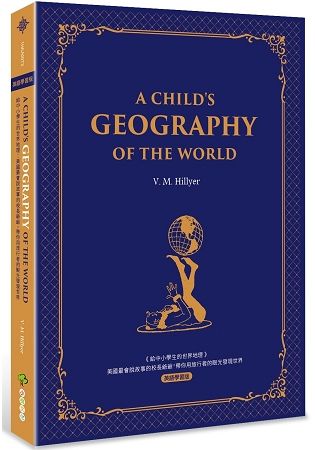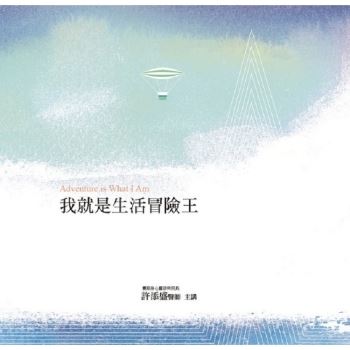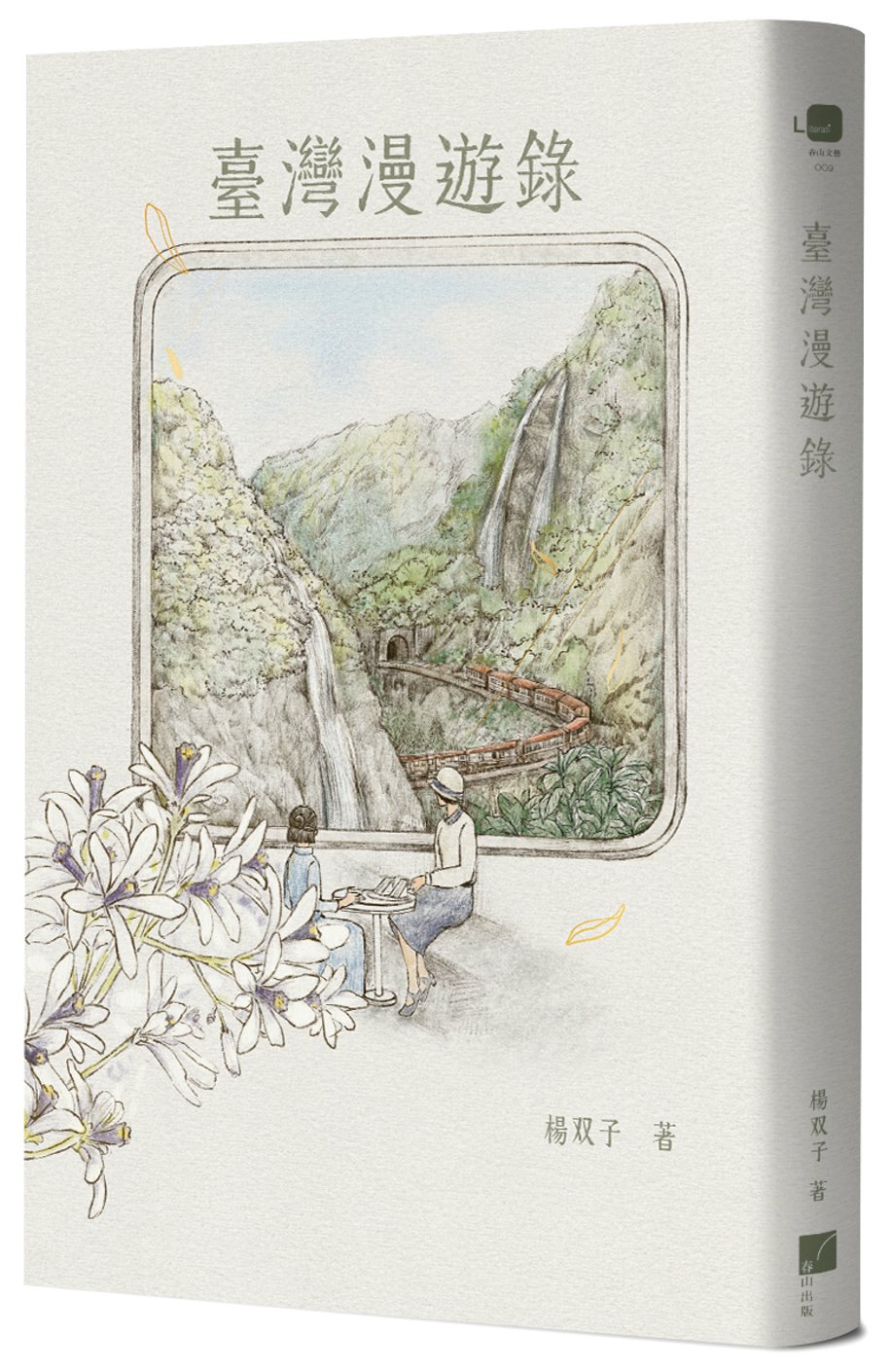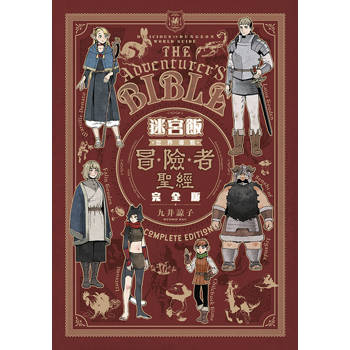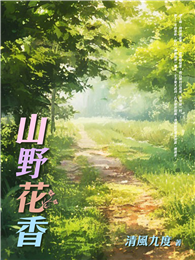【台灣唯一,經典英語學習版】
跟著美國最會說故事的校長爺爺,一起擴充你的英語字彙!
全美中小學生指定讀物,西方家庭必備經典
50位教育人士、讀者一致推薦,國中小學生必讀「跨領域」、「知識性」讀物
◎台灣唯一,經典英語學習版,讓你從故事中擴充重要的英文字彙。
◎全球超過10,000,000人讀過的世界地理,遍及美國、韓國、日本、中國
◎獲選美國中小學最佳讀物
◎1924年首印後,不斷再版,至今仍然是美國卡爾維特學校的明星課程
讓擅長將知識化做篇篇動人故事的校長爺爺,
以孩子的視角、旅行者的眼光講述世界地理,瞬間拉近地圖與孩子的距離;
本書更新增:
各大洲小檔案,簡單查閱世界五大洲的重要地理概念;
國家小檔案,輕鬆了解不可或缺的世界各國知識;
重點複習,整合統整各個國家的重點學習觀念;
動動腦,想想看,讓孩子檢查是否真正了解地理訊息!
一本書,結合地理知識的快樂旅行,讓孩子從旅行的角度,
輕鬆愉快的了解世界地理,嚴肅的地理也瞬間變成可愛有趣的事情了!
世界這麼大,地球上有好多個國家,要記住這麼多世界知識,是不是覺得很難呢?
其實,地理也可以學得簡單又有趣!
你知道,只要伸出左手,就可以輕鬆理解墨西哥灣旁邊的地理概念嗎?
你知道,只要把歐洲地圖轉半圈,就可以看見一個愛踢足球的老奶奶嗎?
你知道,冰島雖然叫「冰」島,上面卻有許多火山與溫泉嗎?
你知道,「阿根廷」是銀子之都的意思,但當地的銀礦資源卻很少?
《給中小學生的世界地理》帶你一起旅行五大洲、七大洋,
讓地理不再枯燥無味、讓知識變成可愛的故事!
讓學習地理就像旅行,輕鬆、愉快、豐富、完整!
本書特色
‧簡單、具故事性的文章,了解世界的同時,學習重要的英語運用。
‧運用簡單、有趣的口吻,讓孩子在輕鬆閱讀的同時,增進地理知識。
‧就像親切的爺爺在講古,每一個地理故事都彷彿身歷其境,加深孩子的學習印象。
‧聽故事就能秒懂全世界,讓枯燥無味的課程都能靈活運用在生活知識上。
1.美國知名校長爺爺帶你快樂學英語
本書作者為美國知名的校長爺爺,運用對孩子來說簡單、有趣的英文用詞描述對世界各地的所見所聞。用經典作品學習英語,加強孩子的英語字彙、學習生活實用用語。
2.西方家庭必備經典書
本書運用簡單、易懂的地理分類,讓大人也能從書中發現自己所不知的地理知識。當孩子有學習上的問題與困難時,家長也可以利用這本書,解答孩子的疑惑。
3.以孩子能否理解為書寫標準
作者寫這套書時,將重點放在:知識講述要符合孩子的認知方式,並通過它讓孩子建立地理的印象。所以在書中,作者並不著重在我們認為「重要」的地理知識,如:氣候、貿易、工業等。這種與眾不同的思維,讓這套書變得更生動有趣。
4.以孩子的視角進行描述
作者運用可愛、有趣的方式,並且用孩子能理解的話語與生活概念,結合地理知識,讓孩子快樂閱讀的同時,也能輕鬆,卻深度的了解地理知識。圖像性的思考模式,拉近孩子與地理學習間的距離。
5.結合地理知識和快樂旅行
作者從北美洲出發,沿著南美洲、歐洲、亞洲、非洲、大洋洲的順序,最後再回到出發地。這趟環遊世界的過程中,他一邊遊玩一邊以說話的方式,將山川河流、風景特色,都描述的趣味橫生,彷彿讓人身歷其境,構成了一本有趣的地理讀物。
得獎記錄
★美國外交部鼎力推薦,美國中小學生的最佳讀物
★入選「影響中國孩子一生的十大圖書」
★連續兩年入選中國教育部推薦「小學生基礎閱讀書目」
★「中小學生優良課外讀物推介評選活動」獲選書籍
★香港誠品童書類暢銷榜TOP10
推薦人
【教育界人士強力推薦】
李裕光(台灣國際蒙特梭利小學副校長)
李家同(清華大學教授)
鄭婉琪(之道學習創辦人)
周鄭州(全人實驗高級中學)
林光義(慧燈中學創辦人)
李崇建(暢銷書《沒有圍牆的學校》作者)
彭菊仙(親子教養書作家)
劉旭欽(全國教師會)
謝國清(全國家長團體聯盟前理事長)
李秀貞(各級學校家長協會理事長)
張榮輝(中小學校長協會榮譽理事長)
呂理政(國立歷史博物館館長)
葉建良(台南圖書館館長)
花梅真(明德國小老師)
連瑞琦(河堤國小老師)
黃學仁(彭福國小老師)
顏如禎(日新國小老師)
何素琴(信義國小老師)
| FindBook |
有 8 項符合
給中小學生的世界地理【西方家庭必備,經典英語學習版】:A Child’s Geography of the World 美國最會說故事的校長爺爺,帶你用旅行者的眼光發現世界的圖書 |
| 圖書選購 |
| 圖書館借閱 |
| 國家圖書館 | 全國圖書書目資訊網 | 國立公共資訊圖書館 | 電子書服務平台 | MetaCat 跨館整合查詢 |
| 臺北市立圖書館 | 新北市立圖書館 | 基隆市公共圖書館 | 桃園市立圖書館 | 新竹縣公共圖書館 |
| 苗栗縣立圖書館 | 臺中市立圖書館 | 彰化縣公共圖書館 | 南投縣文化局 | 雲林縣公共圖書館 |
| 嘉義縣圖書館 | 臺南市立圖書館 | 高雄市立圖書館 | 屏東縣公共圖書館 | 宜蘭縣公共圖書館 |
| 花蓮縣文化局 | 臺東縣文化處 |
|
|
圖書介紹 - 資料來源:博客來 評分:
圖書名稱:給中小學生的世界地理【西方家庭必備,經典英語學習版】:A Child’s Geography of the World 美國最會說故事的校長爺爺,帶你用旅行者的眼光發現世界
內容簡介
作者介紹
作者簡介
維吉爾.希利爾(Virgil Mores Hillyer)
美國傑出教育家,畢生從事中小學教育,酷愛歷史和藝術,喜歡旅行。出生於麻州韋茅斯鎮。哈佛大學教育系畢業後,在紐約的白朗寧學校教了兩年書,隨後遷往巴爾地摩,擔任卡爾維特學校的第一任校長。希利爾創建的小學函授教育系統,即「卡爾維特學校體系」,惠及世界各地的政府雇員、領事、軍官和傳教士的子女。
當希利爾校長於1899年到美國卡爾維特學校(Calvert School)走馬上任時,他還是一個年僅24歲的年輕人。然而,他有天生的教學異能,了解孩子需要什麼,知道如何講孩子才能聽明白,以及孩子成長的規律。
希利爾校長認為,孩子們寫作、閱讀和數學的基礎必須紮實。在此基礎上,他認為學生應當接受歷史、藝術、地理和科學的系統教育,意在培育熟悉周遭世界得全方位學生。希利爾深感傳統教科書的枯燥無味,立志為孩子編寫一套讀起來興味盎然的歷史、地理和藝術讀物,這便是這套書的由來。
維吉爾.希利爾(Virgil Mores Hillyer)
美國傑出教育家,畢生從事中小學教育,酷愛歷史和藝術,喜歡旅行。出生於麻州韋茅斯鎮。哈佛大學教育系畢業後,在紐約的白朗寧學校教了兩年書,隨後遷往巴爾地摩,擔任卡爾維特學校的第一任校長。希利爾創建的小學函授教育系統,即「卡爾維特學校體系」,惠及世界各地的政府雇員、領事、軍官和傳教士的子女。
當希利爾校長於1899年到美國卡爾維特學校(Calvert School)走馬上任時,他還是一個年僅24歲的年輕人。然而,他有天生的教學異能,了解孩子需要什麼,知道如何講孩子才能聽明白,以及孩子成長的規律。
希利爾校長認為,孩子們寫作、閱讀和數學的基礎必須紮實。在此基礎上,他認為學生應當接受歷史、藝術、地理和科學的系統教育,意在培育熟悉周遭世界得全方位學生。希利爾深感傳統教科書的枯燥無味,立志為孩子編寫一套讀起來興味盎然的歷史、地理和藝術讀物,這便是這套書的由來。
目錄
1. The World Through a Spy-Glass
2. The World is Round, for I’ve Been Round It
3. The Inside of the World
4. The Endless Parade
5. The 13 Club
6. Next-door Neighbors
7. The War-God’s Country
8. So Near and Yet so Far
9. Pirate Seas
10. North South America
11. Rubber and Coffee Land
12. Silver Land and Sliver Land
13. The Bridge Across the Ocean
14. The Land of the Angles
15. The Land of the Angles (continued)
16. The Land of the Angles (continued)
17. Parlez-vous Français?
18. Parlez-vous Français? (continued)
19. The Land Below the Sea
20. Castles in Spain
21. Castles in Spain (continued)
22. The Boot Top
23. The Gates of Paradise and the Dome of Heaven
24. The Dead and Alive City
25. A Pile of Ashes a Mile High
26. The Land of the Gods
27. The Land in the Sky
28. “Made in Germany”
29. The Great Danes
30. Fish, Fiords, Falls, and Forests
31. Fish, Fiords, Falls, and Forests (continued)
32. Where the Sun Shines all Night
33. The Bear
34. The Bread-Basket
35. The “IA” Countries
36. The Land of the New Moon
37. The Ship of the Desert
38. A “Once-was” Country
39. A Land Flowing with Milk and Honey
40. The “Exact Spots”
41. The Garden of Eden
42. The Land of Bedtime Stories
43. The Lion and the Sun
44. Opposite-Feet
45. Opposite-Feet (continued)
46. The White Elephant
47. Where the Thermometer Freezes Up
48. A Giant Sea-Serpent
49. Picture Post-Cards
50. Dragon Land
51. Dragon Land (continued)
52. Man-Made Mountains
53. Robber Lands and Desert Sands
54. Afraid of the Dark
55. Zoo Land
56. The End of the Rainbow
57. Fortune Island
58. Cannibal Islands
59. Journey’s End
2. The World is Round, for I’ve Been Round It
3. The Inside of the World
4. The Endless Parade
5. The 13 Club
6. Next-door Neighbors
7. The War-God’s Country
8. So Near and Yet so Far
9. Pirate Seas
10. North South America
11. Rubber and Coffee Land
12. Silver Land and Sliver Land
13. The Bridge Across the Ocean
14. The Land of the Angles
15. The Land of the Angles (continued)
16. The Land of the Angles (continued)
17. Parlez-vous Français?
18. Parlez-vous Français? (continued)
19. The Land Below the Sea
20. Castles in Spain
21. Castles in Spain (continued)
22. The Boot Top
23. The Gates of Paradise and the Dome of Heaven
24. The Dead and Alive City
25. A Pile of Ashes a Mile High
26. The Land of the Gods
27. The Land in the Sky
28. “Made in Germany”
29. The Great Danes
30. Fish, Fiords, Falls, and Forests
31. Fish, Fiords, Falls, and Forests (continued)
32. Where the Sun Shines all Night
33. The Bear
34. The Bread-Basket
35. The “IA” Countries
36. The Land of the New Moon
37. The Ship of the Desert
38. A “Once-was” Country
39. A Land Flowing with Milk and Honey
40. The “Exact Spots”
41. The Garden of Eden
42. The Land of Bedtime Stories
43. The Lion and the Sun
44. Opposite-Feet
45. Opposite-Feet (continued)
46. The White Elephant
47. Where the Thermometer Freezes Up
48. A Giant Sea-Serpent
49. Picture Post-Cards
50. Dragon Land
51. Dragon Land (continued)
52. Man-Made Mountains
53. Robber Lands and Desert Sands
54. Afraid of the Dark
55. Zoo Land
56. The End of the Rainbow
57. Fortune Island
58. Cannibal Islands
59. Journey’s End
序
前言 INTRODUCTION
(If you are under fifteen years, eight months and three days old DON’T READ THIS)
This book is for the child who:
thinks heaven is in the sky and
hell is under the ground;
has never heard of London or Paris and
thinks a Dane is a kind of dog.
It is to give a traveler’s view of the World—but not a commercial traveler’s view.
It is to show the child what is beyond the horizon, from “Kalamazoo to Timbuktu.”
It is to show him not only “the Seven Wonders of the World” but the seventy times Seven Wonders of the World.
When-I-was-a-boy in New England we had for Thanksgiving six kinds of pie: apple, peach, cranberry, custard, mince, and pumpkin, but I was allowed to have only two kinds and I never could make a satisfactory choice. I have had the same difficulty in selecting geographical places and subjects to tell about. There are too many “most important” places in the World to be included in this first survey, and there will inevitably be those readers who will wonder why certain countries and certain places have been omitted, especially the place where the reader may live.
To me, as a child, geography was a bugbear of repellent names—Climate and Commerce, Manufactures and Industries, and PRODUCTS, PRODUCTS, PRODUCTS. It seemed that the chief products of every place in the World were corn, wheat, barley, rye; or rye, barley, wheat, corn; or barley, corn, rye, wheat. In my geography modern Greece had but a paragraph—because, I suppose, it did not produce wheat, corn, barley, rye. Geography was a “stomach” geography; the “head” and “heart” were left out.
I loved the geography pictures and maps but hated the text. Except for an occasional descriptive or narrative paragraph the text was wholly unreadable—a confused jumble of headings and sub-headings and sub-sub-headings: HOME WORK, NOTES, MAP STUDIES, Suggestions to Teachers, HELPS, Directions, Questions, REVIEWS, PROBLEMS, Exercises, Recitations, LESSONS, PICTURE STUDIES, etc., etc., etc.
The World was an orange when I went to school, and there were only three things I can remember that I ever learned “for sure”—that the Dutch children wore wooden shoes, the Eskimos lived in snow houses, and the Chinese ate with chopsticks.
We had a question and answer catechism which we learned as we did the multiplication tables. The teacher read from her book:
Q. “What is the condition of the people of the United States?” and a thirteen-year-old boy in the next seat answered glibly: A. “They are poor and ignorant and live in miserable huts.” At which astounding statement the teacher unemotionally remarked, “No, that’s the answer to the next question, ‘What is the condition of the Eskimos?’ ”
When my turn came to teach geography to beginners nine years of age, I found the available textbooks either too commercial and industrial, on the one hand, or too puerile and inconsequential, on the other. Statistics and abstractions were entirely beyond the ken of the child of nine, and random stories of children in other countries had little value as geography.
As I had been a traveler for many years, had visited most of the countries of the Globe, and in actual mileage had been five times the distance around the World, I thought I would write a geography myself. Vain conceit! A class would listen with considerable attention to my extemporaneous travel talks, so I had a stenographer take down these talks verbatim. But when I read these notes of the same talk to another class, then it was that I discovered a book may be good—until it is written. So I’ve had to try, try again and again, for children’s reactions can never be forecast. Neither can one tell without trial what children will or will not understand. Preconceived notions of what words they should or should not know are worthless: “Stupendous and appalling” presented no difficulties whatever but much simpler words were misunderstood.
I had been reading to a class from an excellent travel book for children. The author said, “We arrived, tired and hungry, and found quarters in the nearest hotel.” The children understood “found quarters” to mean that the travelers had picked up 25-cent pieces in the hotel! Then again I had been describing the “Bridge of Sighs,” in Venice, and picturing the condemned prisoners who crossed it. Casually I asked if any one could tell me why it was called the Bridge of Sighs. One boy said, “Because it is of big size.” A little girl, scorning his ignorance, said, “Because it has sides.” A boy from the country, with a farfetched imagination, suggested it might be because they used “Scythes”; and a fourth child said, “Because it belonged to a man named ‘Cy.’ ”
The study of maps is interesting to almost all children. A map is like a puzzle picture—but new names are hard. And yet geography without either name or place is not geography at all. It is only fairyland. The study of maps and names is therefore absolutely essential and large wall maps most desirable.
Geography lends itself admirably to research on the part of the child. A large scrap-book arranged by countries may easily be filled with current pictorial news, clippings from magazines and Sunday newspapers, and from the circulars of travel bureaus. There is a wealth of such scrap-book material almost constantly being published—pictures of temples in India, pagodas in China, wild animal hunts in Africa, parks in Paris—from which the child can compile his own Geographic Magazine. Furthermore, the collection of stamps offers a most attractive field, particularly for the boy just reaching the age when such collections are as absorbing as an adult hobby.
Of course, the best way to learn geography is by travel but not like that of the business man who landed in Rome with one hour to see the city. Jumping into a taxi and referring to a slip of paper, he said: “There are only two things I want to see here—St. Peter’s and theColosseum. Drive to them as fast as you can and back to the station.” He was accordingly driven to St. Peter’s. Sticking his head out of the window he said to the driver, “Well, which is this?”
In the little town where I was born, there lived an old, old man whose chief claim to distinction was the fact that he had never in his whole life been ten miles away from home. Nowadays travel is so easy that every child may look forward to traveling some day. This book is to give him some inkling of what there is to see, so that his travel may not be as meaningless as that of the simple sailor who goes round the world and returns with nothing but a parrot and a string of glass beads.
(If you are under fifteen years, eight months and three days old DON’T READ THIS)
This book is for the child who:
thinks heaven is in the sky and
hell is under the ground;
has never heard of London or Paris and
thinks a Dane is a kind of dog.
It is to give a traveler’s view of the World—but not a commercial traveler’s view.
It is to show the child what is beyond the horizon, from “Kalamazoo to Timbuktu.”
It is to show him not only “the Seven Wonders of the World” but the seventy times Seven Wonders of the World.
When-I-was-a-boy in New England we had for Thanksgiving six kinds of pie: apple, peach, cranberry, custard, mince, and pumpkin, but I was allowed to have only two kinds and I never could make a satisfactory choice. I have had the same difficulty in selecting geographical places and subjects to tell about. There are too many “most important” places in the World to be included in this first survey, and there will inevitably be those readers who will wonder why certain countries and certain places have been omitted, especially the place where the reader may live.
To me, as a child, geography was a bugbear of repellent names—Climate and Commerce, Manufactures and Industries, and PRODUCTS, PRODUCTS, PRODUCTS. It seemed that the chief products of every place in the World were corn, wheat, barley, rye; or rye, barley, wheat, corn; or barley, corn, rye, wheat. In my geography modern Greece had but a paragraph—because, I suppose, it did not produce wheat, corn, barley, rye. Geography was a “stomach” geography; the “head” and “heart” were left out.
I loved the geography pictures and maps but hated the text. Except for an occasional descriptive or narrative paragraph the text was wholly unreadable—a confused jumble of headings and sub-headings and sub-sub-headings: HOME WORK, NOTES, MAP STUDIES, Suggestions to Teachers, HELPS, Directions, Questions, REVIEWS, PROBLEMS, Exercises, Recitations, LESSONS, PICTURE STUDIES, etc., etc., etc.
The World was an orange when I went to school, and there were only three things I can remember that I ever learned “for sure”—that the Dutch children wore wooden shoes, the Eskimos lived in snow houses, and the Chinese ate with chopsticks.
We had a question and answer catechism which we learned as we did the multiplication tables. The teacher read from her book:
Q. “What is the condition of the people of the United States?” and a thirteen-year-old boy in the next seat answered glibly: A. “They are poor and ignorant and live in miserable huts.” At which astounding statement the teacher unemotionally remarked, “No, that’s the answer to the next question, ‘What is the condition of the Eskimos?’ ”
When my turn came to teach geography to beginners nine years of age, I found the available textbooks either too commercial and industrial, on the one hand, or too puerile and inconsequential, on the other. Statistics and abstractions were entirely beyond the ken of the child of nine, and random stories of children in other countries had little value as geography.
As I had been a traveler for many years, had visited most of the countries of the Globe, and in actual mileage had been five times the distance around the World, I thought I would write a geography myself. Vain conceit! A class would listen with considerable attention to my extemporaneous travel talks, so I had a stenographer take down these talks verbatim. But when I read these notes of the same talk to another class, then it was that I discovered a book may be good—until it is written. So I’ve had to try, try again and again, for children’s reactions can never be forecast. Neither can one tell without trial what children will or will not understand. Preconceived notions of what words they should or should not know are worthless: “Stupendous and appalling” presented no difficulties whatever but much simpler words were misunderstood.
I had been reading to a class from an excellent travel book for children. The author said, “We arrived, tired and hungry, and found quarters in the nearest hotel.” The children understood “found quarters” to mean that the travelers had picked up 25-cent pieces in the hotel! Then again I had been describing the “Bridge of Sighs,” in Venice, and picturing the condemned prisoners who crossed it. Casually I asked if any one could tell me why it was called the Bridge of Sighs. One boy said, “Because it is of big size.” A little girl, scorning his ignorance, said, “Because it has sides.” A boy from the country, with a farfetched imagination, suggested it might be because they used “Scythes”; and a fourth child said, “Because it belonged to a man named ‘Cy.’ ”
The study of maps is interesting to almost all children. A map is like a puzzle picture—but new names are hard. And yet geography without either name or place is not geography at all. It is only fairyland. The study of maps and names is therefore absolutely essential and large wall maps most desirable.
Geography lends itself admirably to research on the part of the child. A large scrap-book arranged by countries may easily be filled with current pictorial news, clippings from magazines and Sunday newspapers, and from the circulars of travel bureaus. There is a wealth of such scrap-book material almost constantly being published—pictures of temples in India, pagodas in China, wild animal hunts in Africa, parks in Paris—from which the child can compile his own Geographic Magazine. Furthermore, the collection of stamps offers a most attractive field, particularly for the boy just reaching the age when such collections are as absorbing as an adult hobby.
Of course, the best way to learn geography is by travel but not like that of the business man who landed in Rome with one hour to see the city. Jumping into a taxi and referring to a slip of paper, he said: “There are only two things I want to see here—St. Peter’s and theColosseum. Drive to them as fast as you can and back to the station.” He was accordingly driven to St. Peter’s. Sticking his head out of the window he said to the driver, “Well, which is this?”
In the little town where I was born, there lived an old, old man whose chief claim to distinction was the fact that he had never in his whole life been ten miles away from home. Nowadays travel is so easy that every child may look forward to traveling some day. This book is to give him some inkling of what there is to see, so that his travel may not be as meaningless as that of the simple sailor who goes round the world and returns with nothing but a parrot and a string of glass beads.
|
